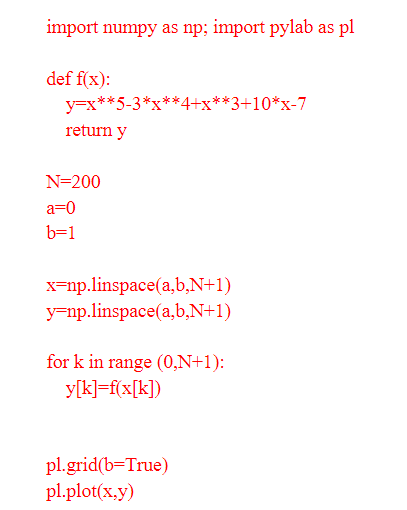Answered step by step
Verified Expert Solution
Question
1 Approved Answer
import numpy as np; import pylab as pl def fx): return y N-200 a-0 b-1 x-np.linspace(a,b.N+1) np.linspace(a,b.N+1) y- for k in range (O,N+1): pl. grid(b=True)



Step by Step Solution
There are 3 Steps involved in it
Step: 1

Get Instant Access to Expert-Tailored Solutions
See step-by-step solutions with expert insights and AI powered tools for academic success
Step: 2

Step: 3

Ace Your Homework with AI
Get the answers you need in no time with our AI-driven, step-by-step assistance
Get Started


